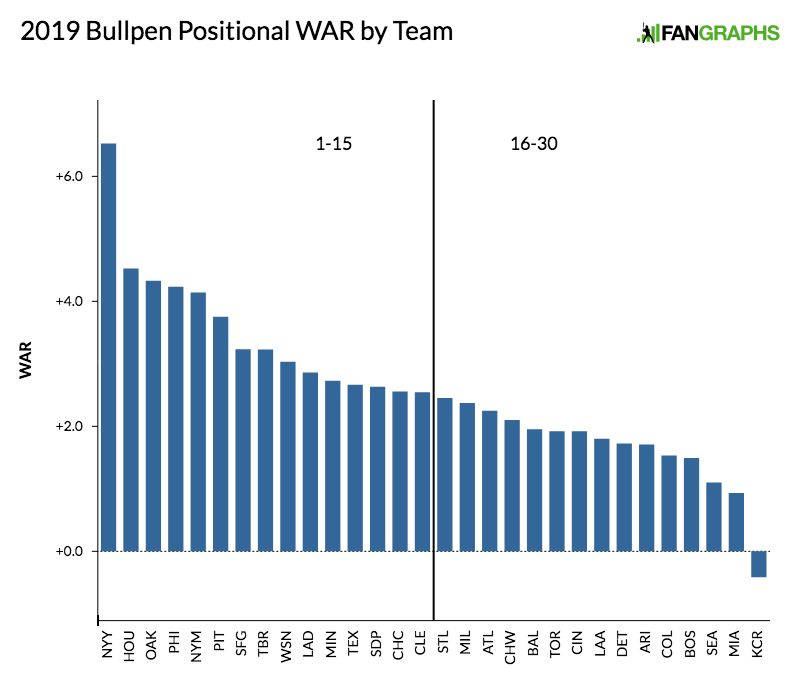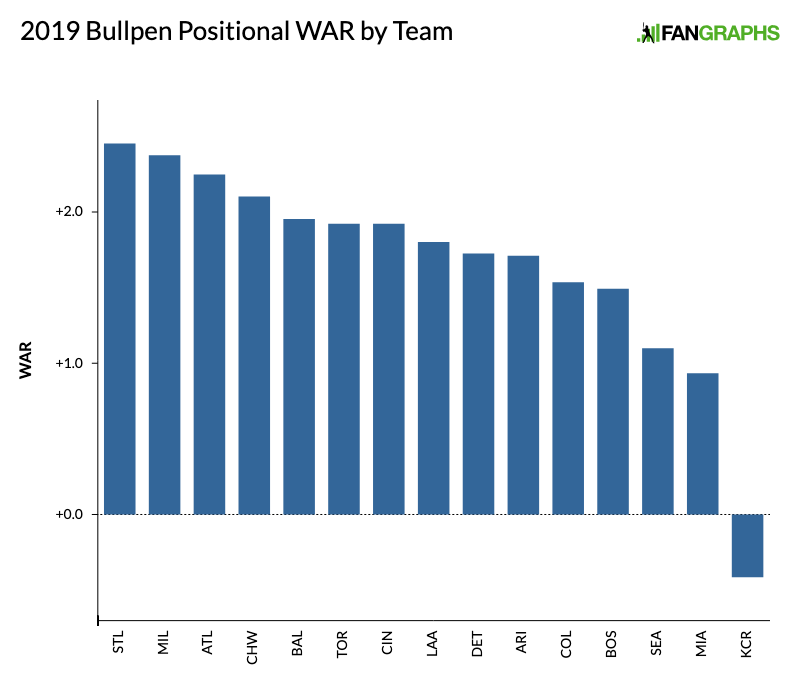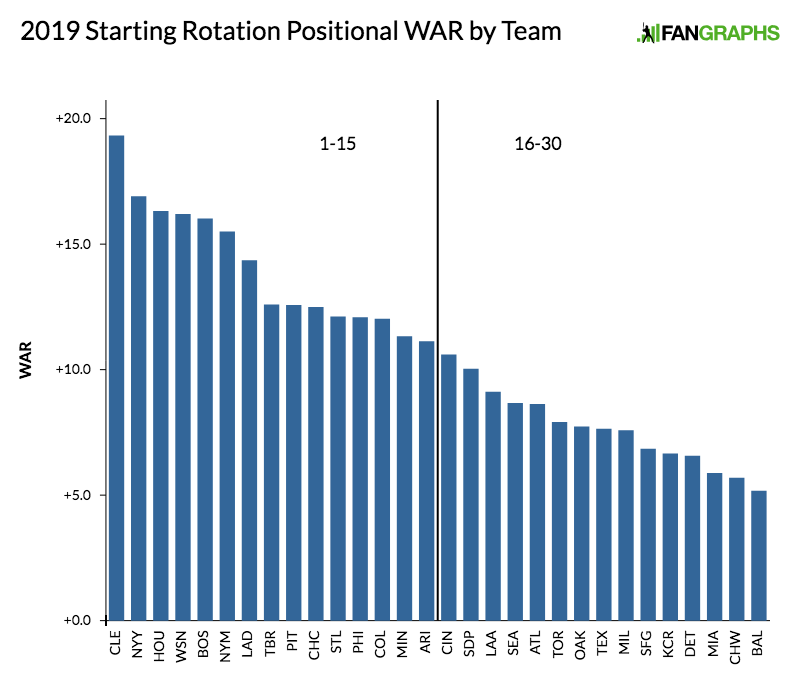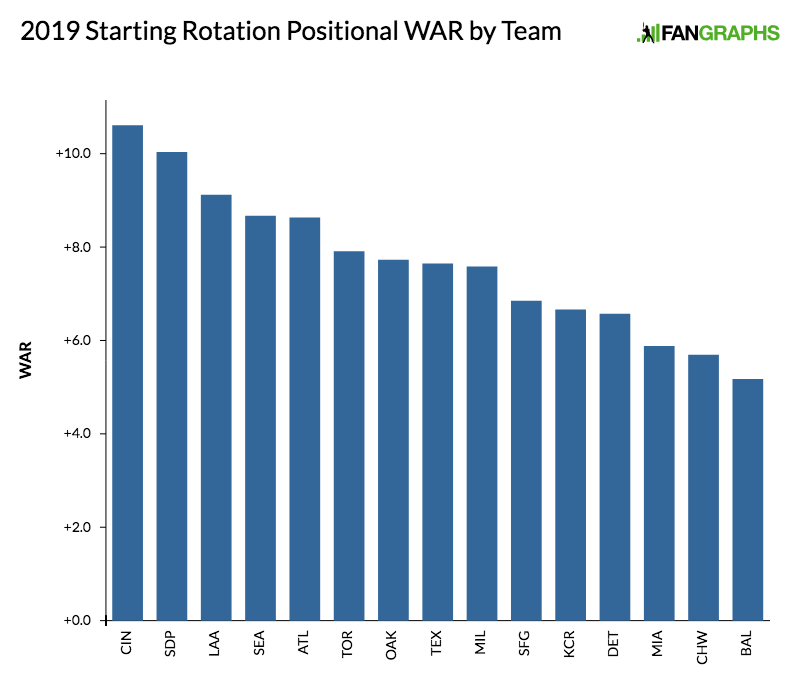The 2019 baseball season is already officially underway, though what transpired at the Tokyo Dome last week between the A’s and Mariners barely registered to these bleary eyes beyond Ichiro Suzuki’s stirring farewell, what with the time difference. As the stateside version of Opening Day has approached, I’ve been asked, again and again while doing radio spots, variants of the question, “What are you most looking forward to about this season?” Some of my answers have already vanished into the ether, but I figured it would be worthwhile to take a break from squinting at depth charts and contract extensions long enough to jot down a set for posterity.
Bryce Harper and Manny Machado changing the conversation
As this pair of generational talents explored free agency in pursuit of record-setting paydays, we heard endless speculation about each player’s destination, endless excuses about why certain teams were not interested, and far more about the pair’s flaws than their virtues. The critiques came from all directions. Some of them were diatribes of the get-off-my-lawn variety, or declarations about how they wouldn’t fit with this team or that because reasons. Some of them were the usual, often misinformed, talk radio-fueled blather about how higher salaries will drive up ticket prices (nope), how these two can’t possibly be worth $300 million, and how their occasional failures to hustle portend the downfall of America. That said, some of the critiques were legitimate, pointing out Harper’s difficulties with the shift, his struggles to stay healthy, and his curiously bad defensive metrics, or Machado’s suspect work in his return to shortstop and his longstanding penchant for finding mischief on the field in the form of questionable plays.
Enough already. As Reggie Jackson once said, “When you have the bat in your hand, you can always change the story.” At long last, Harper and Machado can take the field for their new teams, and let their bats, and the rest of their play, do the talking.
Mike Trout climbing the JAWS rankings
Like any baseball fan with a pulse, I always want to see what Trout does, as he’s a perennial MVP candidate who’s capable of towering homers, dazzling speed on the bases, and spectacular catches in the outfield. And while I don’t intend to bury my nose in a spreadsheet every time he comes to bat, with an eye towards history, I’m especially enjoying Trout’s progress when it comes to my JAWS metric.
Trout began last season ranked 10th among center fielders, with his career WAR, seven-year peak WAR, and JAWS all at 55.2 (using Baseball-Reference’s numbers). Despite some minor adjustments to his body of work that erased about one win across the board, by May 22 of his seventh full major league season, he surpassed the JAWS standard at the position, the average of each Hall of Fame center fielder’s career and peak bWARs. By season’s end, Trout leapfrogged Kenny Lofton, Carlos Beltran, and Duke Snider to climb to seventh in JAWS (64.0) and fourth in peak (63.8). He should be able to climb two spots in JAWS this year. Joe DiMaggio (78.1/51.0/64.5) is just half a point ahead of Trout; around the time he gets to 1.0 WAR, he’ll move into sixth. With an 8.2 bWAR season — which would be his sixth-best — he would tie fifth-ranked Ken Griffey in JAWS (68.9) and overtake Mickey Mantle (64.8) for third in peak, behind only Willie Mays (73.7) and Ty Cobb (69.2). All this can be done before Trout completes his ninth major league season, one short of officially qualifying for the Hall of Fame.
Meanwhile, I can’t believe it’s taken me nearly a decade to figure this out, but Trout will be fully qualified for the Hall, reaching 10 seasons in the majors, in 2020, which will mark my 10th year as a BBWAA member and thus my eligibility to vote in that winter’s Hall of Fame election (the 2021 ballot).
A potential four-team race in the NL East
With four teams forecast for at least 84 wins, this division is the deepest as far as contenders go, and it offers so many story lines as well as the potential for plenty of #TeamEntropy fun. The Phillies added Harper, Andrew McCutchen, J.T. Realmuto, David Robertson, and Jean Segura to a team that spent five months of the 2018 season contending and one month stinking on ice. The Nationals lost Harper but added Patrick Corbin, Brian Dozier, Yan Gomes, Trevor Rosenthal, and Anibal Sanchez, plus they can look forward to full seasons of Juan Soto and Victor Robles, and hopefully better health for Stephen Strasburg and Sean Doolittle as well. The Mets brought in a new, unorthodox general manager in former agent Brodie Van Wagenin and added Robinson Cano, Edwin Diaz, Jed Lowrie, and Wilson Ramos, plus they finally nailed down that much-needed Jacob deGrom extension. The Braves, who broke a streak of four straight losing seasons to win the division last year, had a relatively quiet and perhaps counterproductive winter, with Josh Donaldson practically their only addition of note besides prodigal son Brian McCann, but they’ll get a full season of Ronald Acuna Jr. I can’t wait to see how this all plays out.
The Opening Day arrivals of Peter Alonso, Eloy Jimenez, and Fernando Tatis Jr.
In an industry where service time manipulation has become all too common, it’s refreshing to see the Mets, White Sox, and Padres break camp with their highly touted rookies —respectively 48th, eighth, and third on our most recent Top 100 Prospects list — instead of fumfering about defense, early-season playing time, checklists, conditioning, and long-term plans. Granted, both Alonso and Jimenez should have debuted last season, but we can chalk up at least some of the responsibility for the former’s non-promotion to the mess of the Mets front office during Sandy Alderson’s health-related leave of absence. And yes, it took the latter agreeing to an extension that may limit his earning power in the long run to make this happen. But at a time when too few teams are doing their best to win in 2019, it’s good to see these players’ respective teams declaring that these kids are among their best 25 players, and their time is now — even if, as is the case for the White Sox and Padres, this may not be a year in which they contend for a playoff spot.
Yes, the kids might take their lumps at the big league level initially, as just about every rookie does. There are legitimate questions about defense for both Alonso and Jimenez, and about the strikeout rate of Tatis, who’s making the jump after a total of 102 games at Double-A and none at Triple-A; his 2018 campaign ended in late July, when he fractured his left thumb and needed season-ending surgery. At some point, however, the learning at the big league level has to begin. These youngsters have very little to gain by riding more buses and beating more bushes, and likewise for their teams when it comes to answering the questions about “When is ____ coming?”
The eventual arrival of Vladimir Guerrero Jr.
Like Alonso and Jimenez, the number one prospect on our list should have debuted last year, given that he hit a combined .381/.437/.636 with 20 homers in 408 PA at four minor league stops last year (mostly at Double-A and Triple-A). The Blue Jays lead the league in shoveling horse manure concerning why he hasn’t arrived, and they’ve very clearly done their best to game his service clock, though last year’s left knee injury and this spring’s oblique strain have given them some cover. The situation stinks, and it will continue to stink even after Guerrero arrives, presumably sometime in April, because he’s being taken advantage of — within the rules, perhaps, but that’s not to excuse the practice — and he’ll feel the financial hit down the road.
But oh, will the 20-year-old son of a Hall of Famer be a treat to watch given his 80-grade raw power, his 70-grade hit tool, and a youthful exuberance that radiates through the highlight clips. This kid is going to be a whole lot of fun.
The return of Corey Seager
Seager sometimes gets overlooked in cataloging the game’s brightest young stars, but thanks to his prowess on both sides of the ball — his power, his penchant for getting on base, his glovework — he led all shortstops in WAR in both 2016 (7.0) and ’17 (5.9), his age-22 and -23 seasons. After being bothered by a right elbow problem in late 2017, he played just 26 games last year before a torn UCL necessitated Tommy John surgery, and in August, he needed surgery to repair a torn left hip labrum. The Dodgers managed to make it back to the World Series without him, a testament to their depth, and major league shortstops turned in their best offensive showing on record (97 wRC+), a testament to the wealth of talent at the position. Yet everybody will be better off with the soon-to-be-25-year-old back where he belongs.
The last stand of CC Sabathia
After mulling retirement for most of last year, the big man decided to give it one more go, though he’s starting the year on the disabled list as he recovers from an offseason heart procedure and yet another knee surgery. At 38 years old, the former Cy Young winner is no longer the dominant power pitcher that he once was, but between swapping out his four-seam fastball for a cutter, and his use of a brace to support a right knee hobbled by bone-on-bone arthritis, he’s undergone a fascinating reinvention. What he’s lost in velocity, he’s gained in wiliness, and in fact, he’s become an expert at generating soft contact; his average exit velo of 84.4 mph placed him in the 98th percentile last year, and he’s been in the 96th percentile or better in his past three seasons.
What’s more, Sabathia’s confrontation with his alcoholism has further humanized his transformation while underscoring his status as a pillar of the Yankees’ clubhouse, a mentor to so many young players, and an all-around mensch. I’ve had a soft spot for the pitcher and the man since forever, particularly while watching him carry the 2008 Brewers and 2009 Yankees on his back, and I look forward to watching him celebrate both his 250th win (he’s at 246) and 3,000th strikeout (he’s at 2,986). It’s a statistical quirk that only two other southpaws (Steve Carlton and Randy Johnson) have gotten to that milestone, but it’s fine company nonetheless, and it certainly won’t hurt in his quest to reach Cooperstown.
Michael Lorenzen’s two-way experiment
Tommy John surgery has robbed us of Shohei Ohtani’s presence on the mound in 2019, but the majors won’t be entirely devoid of two-way players thanks chiefly to Lorenzen, the only member of the quartet I highlighted last month (Kaleb Cowart, Matt Davidson, and Jared Walsh were the others) to make an Opening Day roster. A solid righty reliever for the Reds, Lorenzen has more than a little pop in his bat; last year, he clubbed four homers in 34 PA while batting .290/.333/.710, and he’s belted six homers and maintained a 101 wRC+ through 92 PA during his four-year career. The Reds have given him reps in center field (his natural position at Cal State Fullerton) this spring, and intend to do so during the regular season, setting up a compelling experiment.
It will be very interesting to see how this plays out, in part because it may require tweaking one of the rule changes that MLB announced for the 2020 season, namely an official designation for two-way players based upon pitching at least 20 innings and starting at least 20 games as a position player or designated hitter, with at least three plate appearances in each of those games. Barring injury, Lorenzen should easily meet the former requirement, but the latter is probably a stretch even with Nick Senzel starting the year on the injured list. What’s more, the new rule would also affect Ohtani, who won’t pitch at all this year. More flexibility is needed with the definition in order to prevent the stifling of innovation. Speaking of rules…
The Atlantic League’s experiments
Thanks to an unprecedented working agreement between MLB and the independent Atlantic League, the latter has introduced some rule changes for 2019 that may carry ramifications for future changes in MLB. The most radical, a midseason change of the pitching distance from 60-foot-6 to 62-foot-6, seems destined for disaster or near-immediate reconsideration, and I can’t blame Atlantic League pitchers for resenting the possibility of becoming guinea pigs. The rule changes also include the use of TrackMan radar to assist the home plate umpire in calling balls and strikes — yes, we’re getting Robot Umps Now, and we’ll see how the limitations of the technology play out — larger bases, the three-batter minimum for pitchers (something MLB plans for 2020), a prohibition of infield shifts (blech) and mound visits except for the case of injury (hmmm), reduced time between innings (to 1:45, 15 seconds shorter than MLB’s changes for this year).
The stated goal is to “create more balls in play, defensive action, baserunning, and improve player safety,” which seems worthwhile. Aside from the mound distance change, I’m eager to see how it all plays out, not because I believe all of these changes should be enacted but because the rule book is not sacrosanct. It’s beneficial for baseball to have a means of experimenting its way out of this current action-suppressed cul de sac rather than remaining static.
A new fan in the family
With a FanGraphs senior writer and an Athletic managing editor for parents, our daughter Robin has received plenty of exposure to baseball in her first 2 1/2 years, and she’s largely enjoyed it, particularly when she got to watch a Cape Cod League game from behind the backstop last summer and coined the phrase “baseball run away!” for a home run. That was a heartwarming moment, but nothing melted us more than when she pulled up on the couch one evening last week and asked, “Can we watch some baseball?” Hell yeah, we obliged.
Robin has already visited Yankee Stadium (2017) and MCU Park (home of the Brooklyn Cyclones) last summer. This year, with an afternoon nap no longer an obstacle, we’re planning to take her to Citi Field (a better ballpark experience than Yankee Stadium, regardless of age) and to Richmond County Bank Ballpark (home of the Staten Island Yankees) to complete her collection of New York City ballparks, as well as more Cape Cod League games. She doesn’t understand the rules yet, but she loves watching players run around and balls soar. While the odds are that someday she’ll rebel against whatever mom and dad hold dear, we’re determined to savor this time.





